This article was co-authored by Peggy Rios, PhD. Dr. Peggy Rios is a Counseling Psychologist based in Florida. With over 24 years of experience, Dr. Rios works with people struggling with psychological symptoms such as anxiety and depression. She specializes in medical psychology, weaving together behavioral health programs informed by empowerment theory and trauma treatment. Dr. Rios uses integrated, evidence-based models to provide support and therapy for people with life-altering medical conditions. She holds an MS and Ph.D. in Counseling Psychology from the University of Maryland. Dr. Rios is a licensed psychologist in the state of Florida.
There are 28 references cited in this article, which can be found at the bottom of the page.
This article has been viewed 366,576 times.
Chronic or severe pain can interfere with our ability to work, maintain relationships, and sleep properly. If pain medications and other treatments are unable to bring you full relief from migraines, rheumatoid arthritis, neuropathic pain, or another condition, consider trying mind-based techniques to reduce your pain.
See When Should You Try This? to learn more about when using your mind to overcome pain might be a good course of action.
Steps
Relaxing the Body
-
1Take a breath. If your pain is severe, you are likely breathing rapidly and shallowly. In contrast, controlled deep breathing (breathing from the diaphragm and exhaling from the chest) has been shown to harness the parasympathetic nervous system's “quieting response.”
- Lay down in a quiet room. Turn off any distractions and reduce any exterior factors that may over-stimulate you. You may choose to close your eyes or focus them on a specific point.
- Try to focus on nothing but inhalation and exhalation. If you can realize that you are in control of your body and take charge of your own breathing, you may be better able to prevent the pain from controlling you. Once you are breathing deeply, muscle relaxation may come naturally. Try to let go of all feeling in your body and remain focused only on breathing.
- Women practicing Lamaze breathing techniques in childbirth are utilizing the benefits of controlling breathing to lessen pain.[1]
-
2Take the next step. If deep diaphragmatic breathing alone fails to provide you with relief, there are other options for calming tight muscles and the pain that accompanies them.
- Progressive relaxation has been shown to be an effective form of muscle relaxation that requires no external stimuli.[2] Begin with your toes, then work you way up through the muscles in the rest of the body until you reach your face. For each muscle, first slowly contract the muscle, then relax it, waiting until it is fully released before moving upward.
- When your mind alone fails to bring muscle relation, consider adding pressure point therapy. Research shows that finding pressure points associated with your specific type of pain and compressing them with your fingers reduces muscle tension, thereby alleviating pain. Be careful not to continue activating a pressure point if it seems to be worsening your pain when you remove your fingers, however.
Visualizing Relief
-
1Practice visualization. Visualization, also called guided imagery, involves coming up with a detailed situation and the emotions that accompany it. In study after study, visualization has been shown to aid relaxation and provide pain relief.[3] In the case of severe or chronic pain, visualization often, but not always, means imagining a situation in which you are pain-free, at ease, and feeling well and unstressed. The key is finding a visualization that works for you.
- A common successful form of visualization involves imaging all of the sensations association with being in a warm bathtub or lounging on a beach.[4]
- Research suggests that both the sacred and the profane provide excellent visualization topics, too. According to one Johns Hopkins study, thinking of a sexual fantasy worked better at reducing pain than thinking of more “vanilla” topics.[5] For others, focusing on religious or spiritual thoughts worked helped at coping with pain.[6]
- Another odd, but effective, visualization topic is food. One University of Wisconsin study found that just thinking about food alleviates pain.[7] For example, try imagining a decadent dessert or your favorite Sunday dinner.
-
2Confront your pain. Some research suggests that, instead of thinking of other sensations, you might want to focus on separating yourself from your pain.
- Try “disassociation” (imagining that the painful part of your body is separate from the rest of your body, far away from your mind).[8] Consider visualizing your pain as a giant blob, a loud noise, or a bright light. The trick is to imagine that you are gradually reducing the irritating quality of the symbol — shrinking the size of the blob, making the noise quiet, or dimming the light. As you reduce that irritation, you'll reduce the irritation caused by your pain.[9]
- You might also imagine the feeling of a numbing agent, like Novocain, being injected into the source of your pain.[10]
-
3Divert your senses elsewhere in your body. If other techniques fail, consider diverting your attention from the part of your body that is in pain to another part of your body.
- Instead of thinking about your aching head or burning hands, for example, focus on your feet.[11]
- Consider all of the sensations that you usually ignore and give them your focus. Pay attention to the texture of your socks. Wiggle your toes and feel them rub against one another. In short, "tune in" to all of the sensation that you normally "tune out" because you're primary focus is on your pain.
Changing Your Focus
-
1Meditate. Numerous studies have shown that mindfulness meditation substantial reduces pain.[12] [13] [14] In fact, recent studies suggest that meditation may be able to actually change how the brain processes pain.[15] Done correctly, meditation can help pain suffers move their focus from their body.
- Begin simply, with brief sessions of 10 or 15 minutes so that the practice does not seem too overwhelming or burdensome.[16] Sit in a comfortable position on the floor (or in a chair if your pain limits your ability to sit on the floor). Pay attention to your deep, measured breathing, and focus on an object or on mentally repeating a soothing or uplifting phrase (this is called a mantra).
- It may take a bit of practice to get the hang of meditation, but it is a powerful way to decrease the intensity of chronic pain.
- If you're still struggling to mediate, audio guides to mindfulness meditation are available for free from Ronald Siegel, and assistant professor of psychology at Harvard Medical School.[17]
- For a short-term dose of meditation's benefits, say a mantra by itself. Repeating a mantra for as little as thirty seconds has ben shown to reduce pain.[18] Many experts suggest picking a neutral or positive work, but research also shows that, for some suffers of pain, shouting a curse word actually works better than saying a neutral word![19]
-
2If meditation isn't for you, consider seeking out positive distractions. Pain has a way of absorbing all of our attention, but we can fight back by focusing on things we enjoy, such as watching a movie, playing a game, or spending time with a friend.[20]
- Laughter, in particular, has been shown to reduce pain by releasing endorphins.[21] So going to the comedy club or seeing your favorite comedy film might, quite literally, be a form of medicine.
- Listening to music is another activity shown to be especially successful in helping people with chronic pain. Studies have shown that listening to music as little as one hour a day reduces chronic pain. Music decreases pain and feelings of depression while increasing the listener's sense of power. Studies show that “pleasing” music, in particular, offers the most pain reduction.
-
3Be social. Suffers of chronic pain understandably cut back on their social activity. However, doing so can be counterproductive.
- Making plans with family and friends can boost your mood and distract you from your pain. In fact, simply thinking of friends and family reduces pain. Studies show that viewing pictures of loved ones, such as romantic partners, increases the body's resistance to pain.[22]
-
4Get creative. Art therapy has become a popular technique for dealing with chronic pain.[23] Not only does creative activity provide you with a distraction from your pain, it also provides you with an outlet to express any anger or frustration you're feeling because of your pain.
- There's no "right" type of creative activity. Go for the hobby that interests you most, whether its painting, knitting, beading, or anything else.
- For example, writing has also been shown to reduce pain. One of the most effective methods is to write for 15 minutes before bed, putting any worries or concerns down on paper so that you can remove them from your mind and allow yourself to get restful sleep.
-
5Know when to seek help. If all other forms of distraction fail, consider seeking professional assistance. Psychologists can help you take your mind off of your chronic pain.
- According to the American Psychological Association, hypnosis designed to decrease pain — known as “hypno-analgesia” — has been shown to be effective in controlled experiments.
- Psychologists can help reduce chronic pain in other ways, too, such as through the use of Cognitive Behavioral Therapy.[24]
Embracing Mindfulness
-
1Understand your pain. According to brain scans, chronic pain suffers actually have more brain tissue dedicated to experiencing pain.[25] [26] [27] This extra tissue is thought to develop, in part, due to the extra focus chronic pain suffers necessarily dedicate to their pain — a relationship between brain and body that highlights the role the mind has in mediating how we experience pain.
- When we experience pain, our instinct is to focus on it and judge its severity, both of which can only make the pain worse and contribute to related anxiety and depression. In this way, our mind can significantly amplify our “primary pain” (the actual injury) by adding “secondary pain” (our thoughts about the injury, which amplify the pain).
-
2Trust the power of your mind. Because of its ability to reduce stress and anxiety, mindfulness is becoming a topic of interest everywhere from academia to the military to corporate board rooms.[28] [29] For those suffering from chronic pain, mindfulness can help “turn own the volume” on the secondary pain by soothing the parts of the brain that generate this secondary pain.
- "Mindfulness” techniques have been shown to help reduce chronic pain by as much as 57 percent.[30]
- While the biological effects of mindfulness are still being studied, some of its benefits are already clear. For example, mindfulness has been shown decrease the levels of stress hormones in the body, allowing the body to more efficiently focus on fighting inflammation.
- Beyond mindfulness's direct effects on pain, it can boost your mood. Studies show that individuals with chronic pain often understandably also succumb to chronic negative thinking and depression. Mindfulness, however, can reduce depression and increase positive thinking.
-
3Travel through different roads to mindfulness. The term "mindfulness" encapsulates many different techniques, including deep breathing and meditation (both of which are discussed below). Mindfulness has been described by one clinical psychologist as "paying attention to something on purpose and with fresh eyes."[31] In its broadest sense, mindfulness attempts to help you live in the moment and slow down, particularly during times of stress or pain.
- For example, instead of picking up your cup of coffee or tea and drinking without thinking, pay attention to the texture of the cup, its weight, and the shape of the handle. Note the feeling of the cup on your lips. Let the sip of liquid linger on your tongue, paying attention to the flavors.[32]
- Search for more everyday opportunities to be mindful. When you brush you teeth, pay attention to the sensation, rather than letting yourself think about your job — or your pain — as you brush .[33]
- One common mindfulness technique that can be used in everyday life is sensory isolation. Instead of letting yourself be bombarded by every sensation — including pain — focus on one of your senses, such as sound. Focus on all of the sounds around you. Listen for small sounds that you usually ignore.[34]
- The key in everyday mindfulness is to more fully experience a detail in life that's not your pain. These small moments of mindfulness can help alleviate symptoms of pain at times, such as when you're at work, that you can't give your full attention to relaxation or mediation.
When Should You Try This?
-
1Use the power of your mind to manage chronic pain. If you suffer from low-grade pain that you'll likely live with for a long time, it's worthwhile to practice managing it with your mind. Techniques like visualization and mindfulness can help improve your quality of life. Dealing with chronic pain is never easy, but you may be able to focus on it less and lift your spirits if you learn how to manage your pain mentally.
-
2Try mentally overcoming short-term pain. Migraines, cramps, and even pinpricks are forms of short-term pain that can be dealt with mentally, with practice. If you're averse to relying too heavily on pain medication, it's worth learning how to distract yourself or breathe through the pain until you've made it to the other side.
-
3Utilize other ways to control pain, too. The mental component doesn't have to be the only form of pain management you use. Consider practicing mental pain relief techniques in conjunction with other methods, like using medicine, getting massages, trying acupuncture, and so on. Find the combination of methods that works best for your body and your situation. Be sure to consult your physician to help you come up with a healthy plan.
-
4Seek help before your pain becomes debilitating. While the thought of overcoming pain without medication may seem like the brave thing to do, it also takes mental strength to get the help you need to keep your body in good shape. Pain is a signal that something is going wrong in the body. Don't push yourself too far before you seek medical attention to get proper treatment and relief.
Expert Q&A
-
QuestionHow can I stop my fear of sex pain?
 Alexandra JanelliAlexandra Janelli is a Certified Hypnotherapist, Anxiety & Stress Management Coach, and owner and founder of Modrn Sanctuary, a holistic health and wellness facility in Philadelphia, Pennsylvania. With over 10 years of experience, Alexandra specializes in helping clients push through their roadblocks to achieve their goals using her hypnotherapeutic approach. Alexandra holds a BS from the University of Miami. She graduated from the Hypnosis Motivation Institute with an Advanced Training Graduate Diploma in Hypnotherapy and Handwriting Analysis. Alexandra is also a Certified Life Coach from the iPEC Coach Training Program. She has worked with Academy Award Nominee Actors, world-renowned photographers, singers, top-level executives, and professionals across many sectors of business. Alexandra has been featured on MTV, Elle Magazine, Oprah Magazine, Men's Fitness, Swell City Guide, Dossier Journal, The New Yorker, and Time Out Chicago.
Alexandra JanelliAlexandra Janelli is a Certified Hypnotherapist, Anxiety & Stress Management Coach, and owner and founder of Modrn Sanctuary, a holistic health and wellness facility in Philadelphia, Pennsylvania. With over 10 years of experience, Alexandra specializes in helping clients push through their roadblocks to achieve their goals using her hypnotherapeutic approach. Alexandra holds a BS from the University of Miami. She graduated from the Hypnosis Motivation Institute with an Advanced Training Graduate Diploma in Hypnotherapy and Handwriting Analysis. Alexandra is also a Certified Life Coach from the iPEC Coach Training Program. She has worked with Academy Award Nominee Actors, world-renowned photographers, singers, top-level executives, and professionals across many sectors of business. Alexandra has been featured on MTV, Elle Magazine, Oprah Magazine, Men's Fitness, Swell City Guide, Dossier Journal, The New Yorker, and Time Out Chicago.
Certified Hypnotherapist & Anxiety and Stress Management Coach The first step is realizing that there's physical pain, and then there's perceived pain—they're two very different things. Physical pain is real, like getting pricked with a needle, but then there's the fear and anxiety of perceived pain, which can cause your mind to spiral. The more relaxed you're able to become, the easier it will be to identify the reasons why you want to do this in the first place. What's your reasoning? There's always an inspiration there first to be motivated by the pain.
The first step is realizing that there's physical pain, and then there's perceived pain—they're two very different things. Physical pain is real, like getting pricked with a needle, but then there's the fear and anxiety of perceived pain, which can cause your mind to spiral. The more relaxed you're able to become, the easier it will be to identify the reasons why you want to do this in the first place. What's your reasoning? There's always an inspiration there first to be motivated by the pain.
Expert Interview
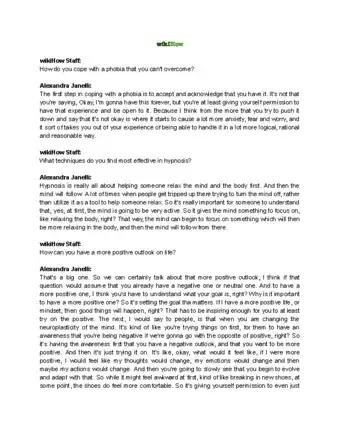
Thanks for reading our article! If you'd like to learn more about overcoming physical pain with your mind, check out our in-depth interview with Alexandra Janelli.
References
- ↑ http://www.chronicbodypain.net/15-mental-tricks-that-fight-pain/
- ↑ https://www.uofmhealth.org/health-library/uz2225
- ↑ http://www.psychologytoday.com/blog/imperfect-spirituality/201206/imagine-life-without-pain
- ↑ http://www.spine-health.com/conditions/chronic-pain/11-chronic-pain-control-techniques
- ↑ http://www.prevention.com/health/health-concerns/pain-relief-tricks-work?slide=4
- ↑ http://www.prevention.com/health/health-concerns/pain-relief-tricks-work?slide=13
- ↑ http://www.chronicbodypain.net/15-mental-tricks-that-fight-pain/
- ↑ http://www.spine-health.com/conditions/chronic-pain/11-chronic-pain-control-techniques
- ↑ http://www.spine-health.com/conditions/chronic-pain/11-chronic-pain-control-techniques
- ↑ http://www.spine-health.com/conditions/chronic-pain/11-chronic-pain-control-techniques
- ↑ http://www.psychologytoday.com/blog/overcoming-pain/201104/mind-control-coping-chronic-pain
- ↑ http://www.jneurosci.org/content/31/36/12705
- ↑ http://www.medscape.com/viewarticle/818931
- ↑ http://www.health.harvard.edu/blog/mindfulness-meditation-may-ease-anxiety-mental-stress-201401086967
- ↑ http://www.theatlantic.com/health/archive/2014/04/treating-chronic-pain-with-meditation/284182/4/
- ↑ http://www.lionsroar.com/smile-of-the-tigerhow-to-do-mindfulness-meditation/
- ↑ http://www.mindfulness-solution.com/DownloadMeditations.html
- ↑ https://www.psychologytoday.com/us/blog/what-mentally-strong-people-dont-do/201511/9-mantras-help-you-stay-mentally-strong
- ↑ http://www.prevention.com/health/health-concerns/pain-relief-tricks-work?slide=2
- ↑ https://aci.health.nsw.gov.au/chronic-pain/painbytes/pain-and-mind-body-connection/how-can-distraction-be-used-to-manage-pain
- ↑ https://www.scientificamerican.com/article/why-laughter-may-be-the-best-pain-medicine/
- ↑ http://well.blogs.nytimes.com/2010/10/13/love-and-pain-relief/?_r=0
- ↑ https://www.health.harvard.edu/blog/art-therapy-another-way-to-help-manage-pain-2018071214243
- ↑ http://bja.oxfordjournals.org/content/87/1/144.full
- ↑ http://www.sciencedirect.com/science/article/pii/S0304394012004806
- ↑ https://www.psychologytoday.com/blog/mindfulness-in-frantic-world/201501/can-mindfulness-meditation-really-reduce-pain-and-suffering
- ↑ http://psychcentral.com/lib/using-mindfulness-to-approach-chronic-pain/
- ↑ https://www.ummhealth.org/center-mindfulness
- ↑ http://www.nytimes.com/2013/11/03/fashion/mindfulness-and-meditation-are-capturing-attention.html?_r=0
- ↑ https://www.psychologytoday.com/blog/mindfulness-in-frantic-world/201501/can-mindfulness-meditation-really-reduce-pain-and-suffering
- ↑ http://psychcentral.com/lib/using-mindfulness-to-approach-chronic-pain/
- ↑ https://nfb.org/images/nfb/publications/vod/vod214/vodfall0611.htm
- ↑ http://psychcentral.com/blog/archives/2012/06/09/7-easy-ways-to-be-mindful-every-day/
- ↑ http://www.huffingtonpost.com/mikko-jarvenpaa/mindfulness-practice_b_4784749.html
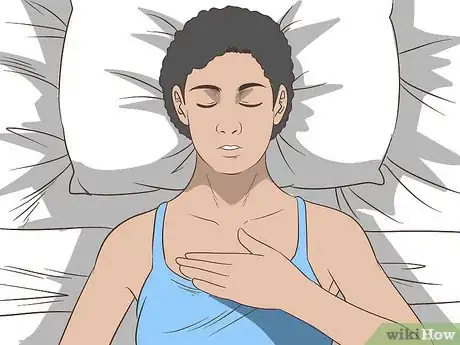
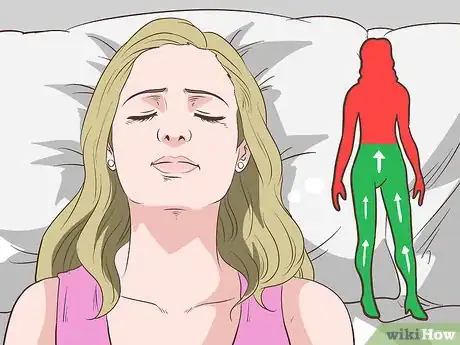

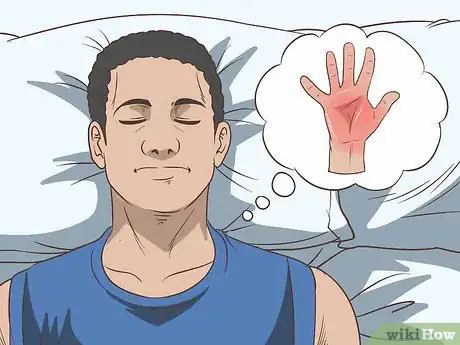
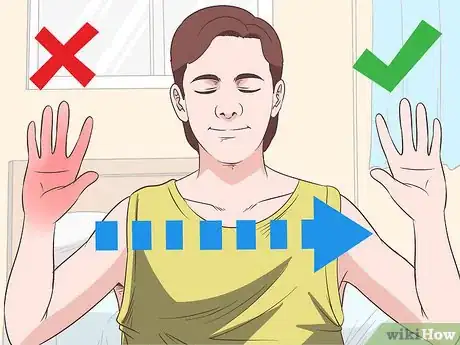
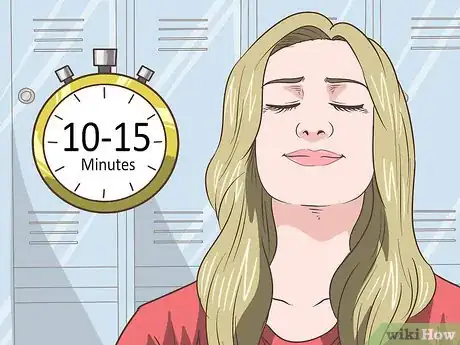


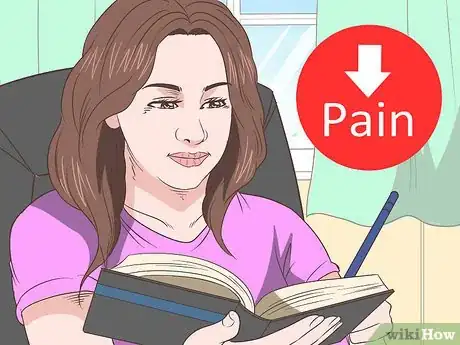

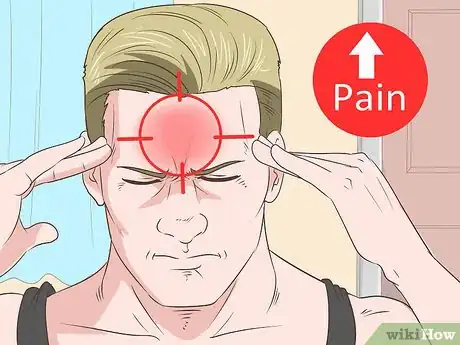

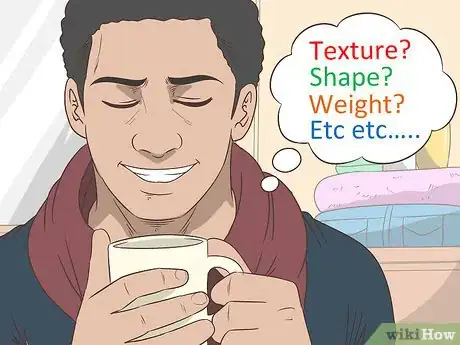
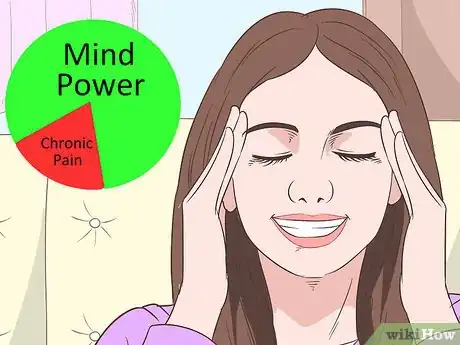
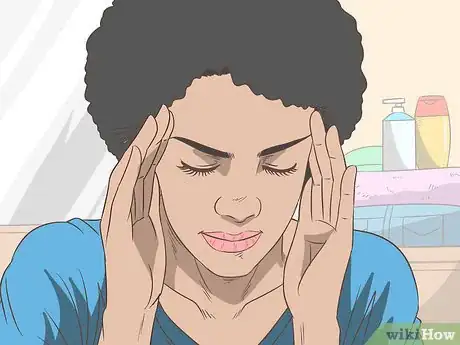
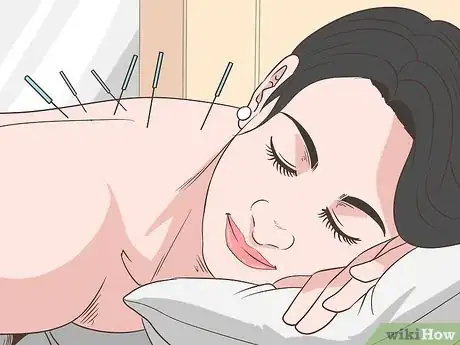










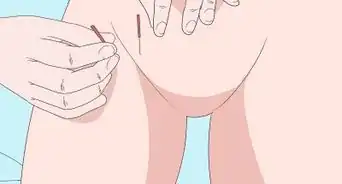
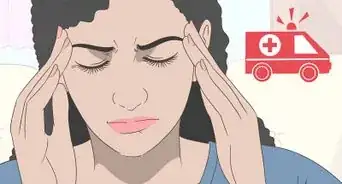


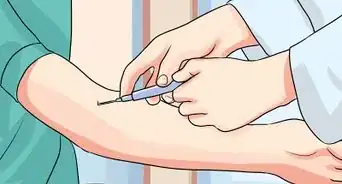










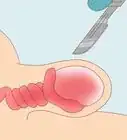






































Medical Disclaimer
The content of this article is not intended to be a substitute for professional medical advice, examination, diagnosis, or treatment. You should always contact your doctor or other qualified healthcare professional before starting, changing, or stopping any kind of health treatment.
Read More...